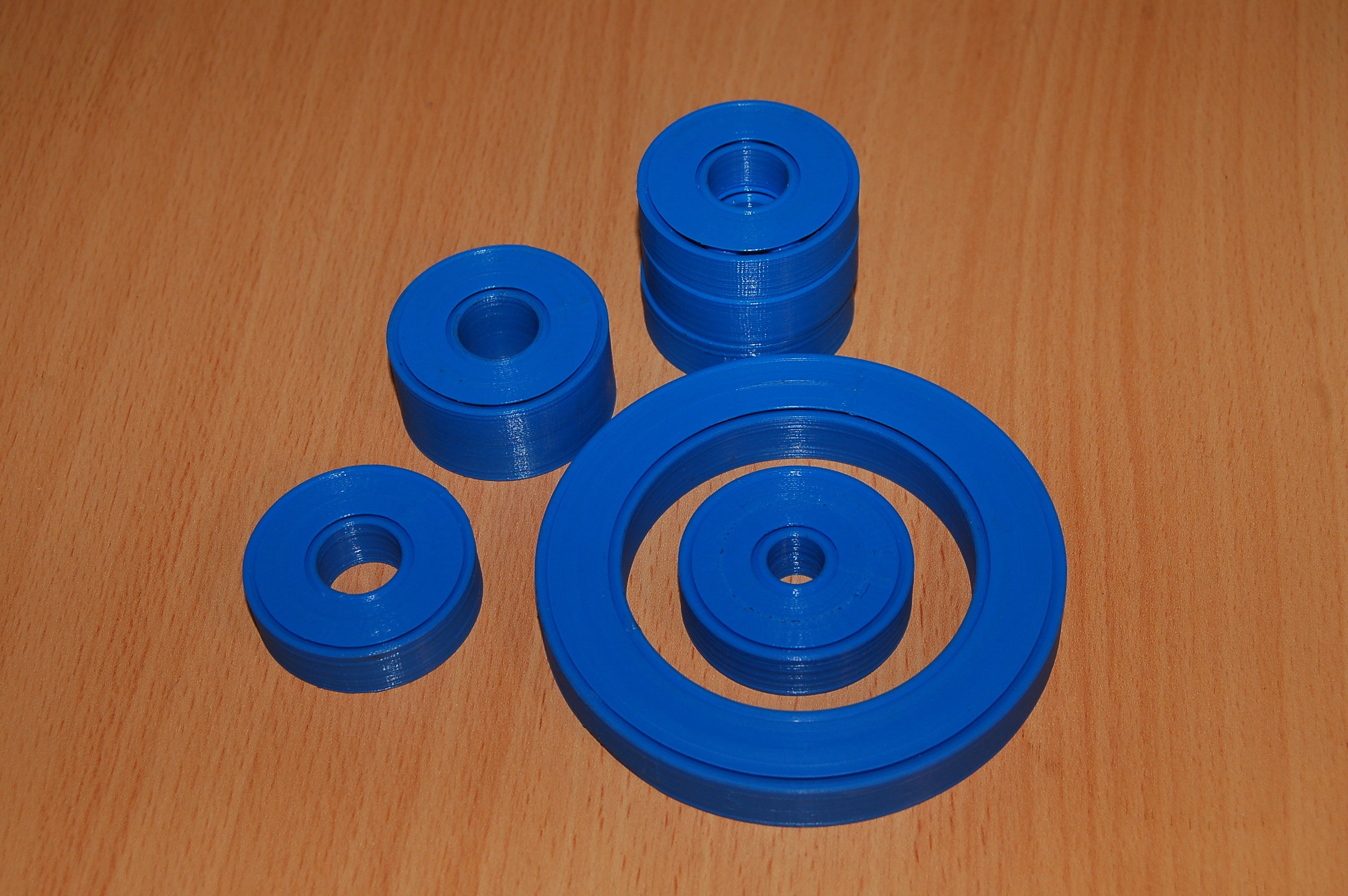
Parametric Caged Roller Bearing V3
prusaprinters
<p>The third version of my print in place parametric caged roller bearing design. Originally published on Thingiverse in 2018, I have now moved it here.</p><p>In terms of the utility of these bearings, they are best suited to light duty radial loads e.g. I have 6 of the old design in a 3kg spool adapter and one in a simple fidget spinner. They can also sometimes hold axial loads depending on the settings; generally good tolerances and printing quality help here. Other than that they are really just an interesting object to print, with some educational value.</p><h4>Features</h4><p>I have added slots to the base of the rollers, so they can be loosened with a flathead screwdriver if necessary; generally it isn't necessary if your print settings are good, but it is useful to have anyway. The loosening slots can be inset into the roller slightly so that the first layer covers the entire roller base, including over the loosening slots. It's quite easy to force through this thin first layer as shown in the images.</p><p>I have also adjusted the way the cage bridges over the rollers by adding the 'cage slice' feature. This is a bit of a hack to make the first cage bridging layer over the rollers consist of just concentric circles, which makes the bridging clean, without having to set the number of shells very high. It slices the bridging part of the cage into rings with a very small gap between them so that the slicer produces extra shells on the bridging section (see pictures).</p><p>You can also generate separate STLs for the different sections of the bearing (raceways, rollers and cage) so that you can do multimaterial bearings. Generally I'd recommend a hard material for the rollers and raceways; PLA is actually decent in this regard. Made entirely from PLA (as with all the examples) they work just fine. Adding a little silicon lubricant makes them work even better.</p><h4>Parameters</h4><p>All the parameters you need to define are the: outer diameter, inner diameter, bearing thickness, tolerances (the default tolerances should be fine for most cases), mesh refinement plus selecting which other features of the bearing you would like e.g. brim, loosening slots.</p><p>All the parameters can be set manually by going into the 'Advanced Parameters' tab. Any of the 'override' variables set to a non-zero value will override the calculated parameters with that value. I have done my best to make the code generate a decent bearing for any combination of the basic parameters, but you may still need to tweak it using the advanced parameters.</p><h4>Slicer settings</h4><p>You will need to check in your slicer, that the first bridging layer over the rollers consists of just concentric circles which start and stop on the cage pillars. You will need to set the number of shells high enough for this to work; using the 'cage slice' feature will reduce the number of shells required for this. This makes sure that the rollers are bridged over cleanly while printing.</p><p>These bearings will work well if your printer settings are well tuned. Generally you want to remove stringing and blobbing on your printer entirely (blobbing on the rollers cannot be hidden in a seam at all) before printing one of these bearings. Setting the start/stop points for the layers to random, can help smooth the bearing surfaces.</p><p>I've found just using a very fine layer height e.g. 0.15 - 0.1mm gets rid of most of these problems although this does increase print time. Rollers that are generally long and thin rather than flat and wide tend to roll better under higher radial loads. This is because the rollers tend to tilt and bind up in the cage if they are too wide, particularly with curved rollers. I recommend to make the 'Bearing Width' at least 1.5x 'Roller Diameter' to help prevent this from happening.</p>
With this file you will be able to print Parametric Caged Roller Bearing V3 with your 3D printer. Click on the button and save the file on your computer to work, edit or customize your design. You can also find more 3D designs for printers on Parametric Caged Roller Bearing V3.
